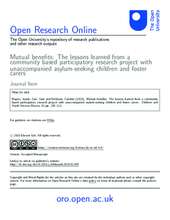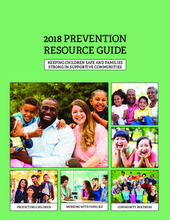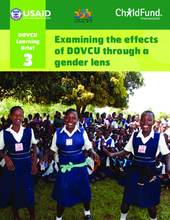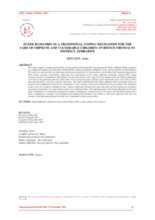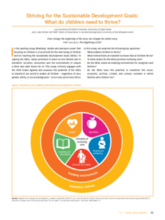Displaying 51 - 60 of 310
The article presents the results of an empirical pilot study carried out on a sample of 24 child protection social workers employed in four public agencies in Italy.
This paper presents a community based participatory research project, which adopted a photovoice approach with seven unaccompanied asylum-seeking children (UASC) living in foster care in the United Kingdom.
This Resource Guide was developed to support service providers in their work with parents, caregivers, and their children to prevent child abuse and neglect and promote child and family well-being.
This article from the Scottish Journal of Residential Child Care describes the Family Based Care (FBC) program by SOS Children's Villages of India.
This learning brief analyzes quantitative data from both households at risk of separation and reintegrating households to understand how the “Deinstitutionalization of Orphans and Vulnerable Children Project in Uganda” (DOVCU) package of integrated social and economic interventions affects children and households differently depending on the sex of the child, caregiver, and/or household head.
This article presents the findings of the Questionnaire to Assess Needs of Children in Care (QANCC), a tool designed to gather children's direct input on the management of Udayan Care's care homes in India.
This study sought to examine the feasibility of rejuvenating and strategically repositioning the Zunde raMambo (King’s granary) as a traditional orphans and vulnerable children (OVC) coping mechanism in Zimbabwe with a special reference to Gutu District.
This essay critically engages with the 2030 Global Agenda and assesses the potential of the SDGs to transform our world to enable all children – regardless of race, gender, ability, or social background – to not only survive but thrive.
This video from UNICEF Rwanda shows some of the moving stories of children and their new families who have been brought together through the TMM initiative, which reintegrates children who have been living in institutions into families and the community.
This position paper from Opening Doors for Europe's Children explains the position of the organization in regards to the EU's Multiannual Financial Framework and the measures within it to support or inhibit the transition from institutional care to family-based care of children.

